The United States, a nation constantly defining and redefining its identity, holds within its borders a collection of landmarks that transcend mere history; they are anchors of collective memory and spiritual reflection. As of the Current Time of Writing in 2025, the importance of these sites is not just in what happened there, but in the enduring cultural meaning and moral weight they carry into the present day.
At Spiritual Culture, we approach this ranking with a perspective focused on spiritual impact, historical universality, and the power of a location to inspire humanistic reflection. This list moves beyond simple popularity to evaluate which landmarks most profoundly shaped the American soul, from the indigenous ancestral centers to the iconic symbols of democracy and liberty.
The following Top 10 synthesizes foundational sites—where seminal documents were signed and battles for freedom were won—with essential cultural centers that reflect both the triumph and the tragedy of the American story. Every entry is chosen for its verifiable, sustained influence on the spiritual, political, and cultural consciousness of the nation and the world.
Table of the Top 10 U.S. Historical Landmarks by Cultural and Spiritual Significance
| Rank | Landmark Name | State | Primary Historical Period | Cultural/Spiritual Status (as of 2025) |
|---|---|---|---|---|
| 1 | Independence Hall and Liberty Bell | Pennsylvania | Colonial/Revolutionary War | UNESCO World Heritage Site; Symbol of Freedom and Democracy |
| 2 | Martin Luther King, Jr. National Historical Park | Georgia | Civil Rights Era | National Historical Park; Center of Non-Violent Spiritual/Political Action |
| 3 | Statue of Liberty | New York/New Jersey | Late 19th Century | UNESCO World Heritage Site; Global Symbol of Enlightenment and Welcome |
| 4 | Taos Pueblo | New Mexico | Pre-Columbian/Indigenous | UNESCO World Heritage Site; Living Community and Site of Ancient Tradition |
| 5 | Lincoln Memorial and Reflecting Pool | Washington, D.C. | Civil War/20th Century Civil Rights | National Memorial; Site of Key Moral/Political Speeches |
| 6 | Pearl Harbor National Memorial | Hawaii | World War II | National Memorial; Solemn Site of Collective Sacrifice and Memory |
| 7 | Mesa Verde National Park | Colorado | Ancestral Puebloan (c. 450 to 1300 CE) | UNESCO World Heritage Site; Testimony to Indigenous Civilization and Spirituality |
| 8 | Gettysburg National Military Park | Pennsylvania | Civil War | National Military Park; Ground Zero for the Struggle over Human Rights and Union |
| 9 | The Alamo | Texas | Texas Revolution | UNESCO World Heritage Site (as part of San Antonio Missions); Symbol of Resistance and Cultural Fusion |
| 10 | African Burial Ground National Monument | New York | 17th and 18th Centuries | National Monument; Hallowed Ground for African Ancestors |
Top 10 Most Important Historical Landmarks in the U.S.
#10. African Burial Ground National Monument
Located in the heart of modern-day Manhattan, the African Burial Ground National Monument is a uniquely powerful site of spiritual reclamation. Re-discovered during excavation for a federal building in 1991, this once-forgotten cemetery holds the remains of thousands of free and enslaved Africans from the 17th and 18th centuries. As the largest and earliest known colonial-era cemetery for Africans in North America, its mere existence forces a profound public acknowledgment of the human cost and spiritual legacy of slavery at the nation’s economic epicenter.
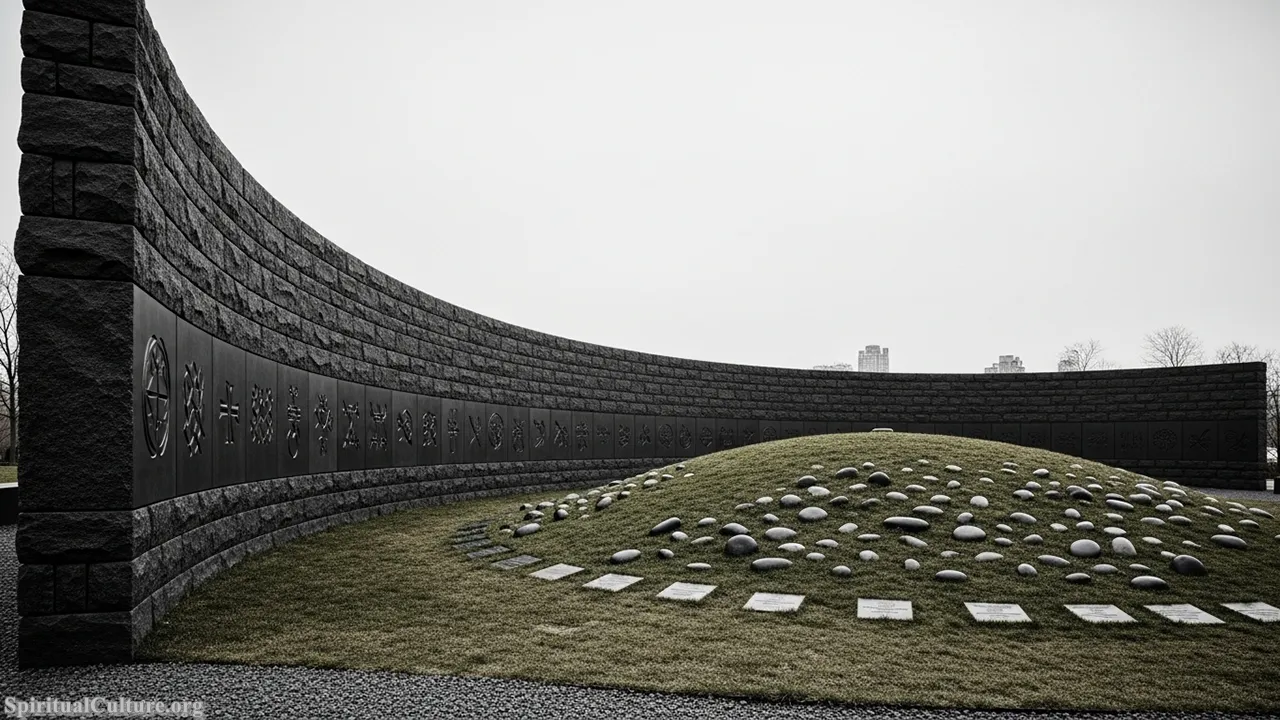
The spiritual impact of this site is immense, representing a collective, overdue act of remembrance and honor. It is a hallowed ground that connects the present-day African American community with their long-silenced ancestors, whose labor built the foundations of the nation’s greatest city. The monument and memorial provide a space for quiet contemplation on themes of identity, sacrifice, and the persistent spiritual resilience required to maintain dignity in the face of brutal oppression.
Preservation of the African Burial Ground is vital, serving as a powerful, non-negotiable lesson that true history must include all voices, especially those buried and forgotten by the dominant narrative. It stands as a silent sentinel, ensuring that the origins of American prosperity are remembered alongside the profound injustices that accompanied them, inviting all visitors to reflect on how spiritual healing begins with truth.
Cultural/Spiritual Highlights:
- Hallowed ground for thousands of African ancestors in colonial New York.
- The re-discovery led to significant changes in U.S. historical preservation policy.
- Represents a spiritual and cultural connection point for the African Diaspora.
#9. The Alamo
The Alamo, located in San Antonio, Texas, is known globally for the 1836 battle that served as a rallying cry for the Texas Revolution. However, its historical significance is multilayered, beginning as Mission San Antonio de Valero, an 18th-century Spanish mission. As part of the UNESCO World Heritage San Antonio Missions, it represents the foundational confluence of Spanish colonial, indigenous Coahuiltecan, and later, American cultures that defined the Southwest.
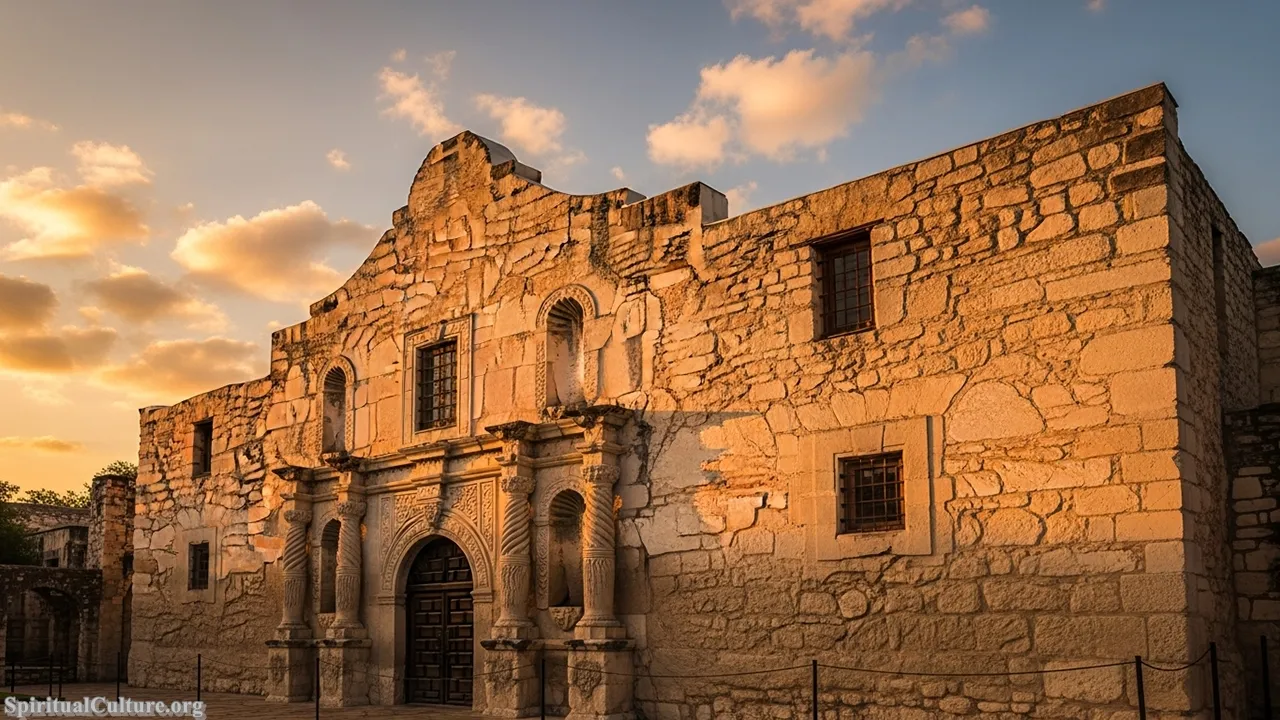
The reason for its ranking lies not just in the “Remember the Alamo” battle cry, but in its function as a symbol of cultural resistance and fusion. Spiritually, it is a place of complex resonance: a former religious center dedicated to conversion and settlement, and later, a battlefield where men fought for opposing ideals of political self-determination. It is a landmark that simultaneously honors devout spiritual practice and fierce political commitment, reflecting the ongoing struggle to define borders and loyalties in a multicultural landscape.
The long-term preservation value of the Alamo lies in its ability to tell multiple histories—as a site of Franciscan spiritual outreach, indigenous adoption of new lifeways, and military sacrifice. It stands today as a tangible reminder that the American story is one of continuous cultural blending and occasional conflict, urging a reflection on the cost of freedom and the importance of heritage conservation.
Cultural/Spiritual Highlights:
- Original function as Mission San Antonio de Valero, a key center for Spanish spiritual expansion.
- Part of the San Antonio Missions UNESCO World Heritage Site.
- Symbol of profound resistance, sacrifice, and cultural blending in the American Southwest.
#8. Gettysburg National Military Park
Gettysburg, Pennsylvania, is the site of the pivotal three-day Battle of Gettysburg in July 1863, which marked the turning point of the American Civil War. This National Military Park preserves the solemn fields where the fate of the United States as a unified nation was determined and is forever associated with President Abraham Lincoln’s transformative Gettysburg Address. It stands as a physical testament to the bloodiest conflict in American history and the ultimate moral struggle over human enslavement.
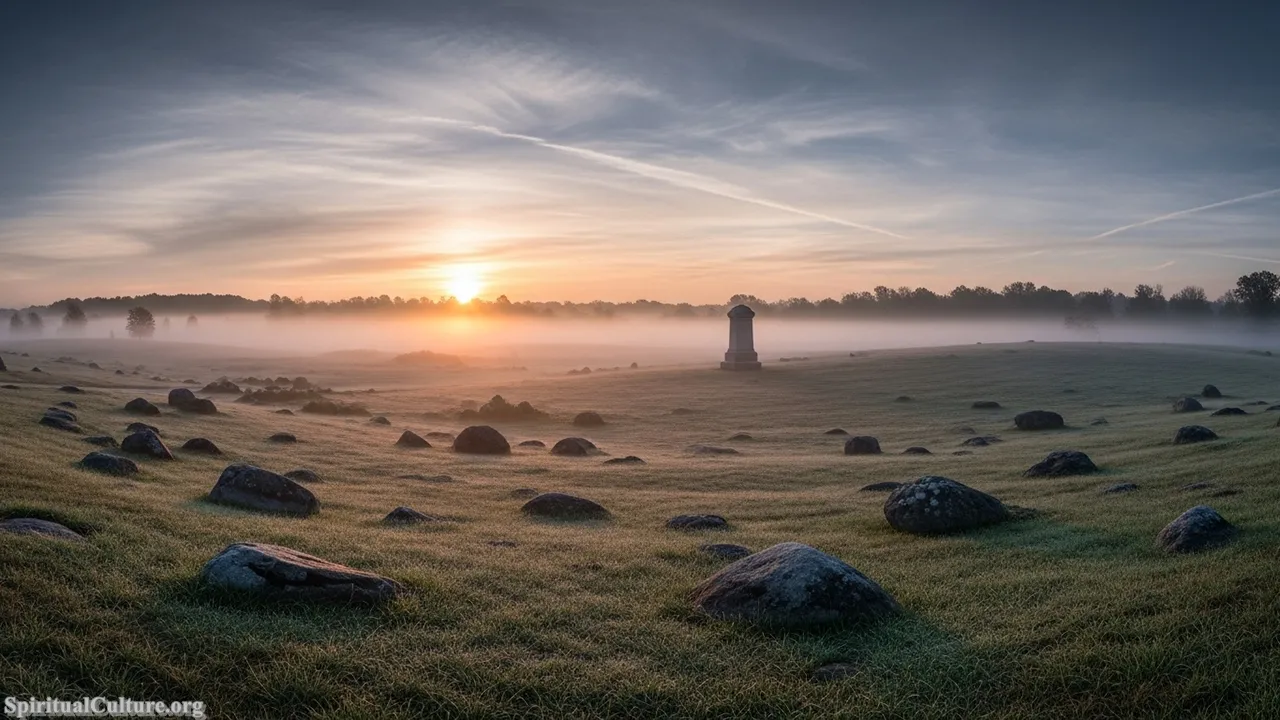
The spiritual impact of Gettysburg is uniquely profound because it forces a confrontation with the failure of the American experiment and the subsequent moral sacrifice required to mend it. The land itself is consecrated by the sheer magnitude of loss, compelling visitors to reflect on the meaning of “a new birth of freedom.” The site is less about triumphalism and more about the spiritual weight of unity and the profound moral lesson that a nation cannot endure half-slave and half-free.
As a preservation priority, Gettysburg serves as the nation’s preeminent moral classroom. It instills the lesson that the ideals enshrined in the founding documents—liberty and equality—came at a nearly unbearable cost. Its cultural value lies in maintaining the site’s original character, allowing future generations to physically connect with the place where the nation’s spiritual and political destiny was brutally but decisively confirmed.
Cultural/Spiritual Highlights:
- Site of the Battle of Gettysburg, the decisive turning point of the Civil War.
- The field is hallowed by the immense sacrifice for the preservation of the Union and the end of slavery.
- Location of Abraham Lincoln’s Gettysburg Address, a defining text of American democracy.
#7. Mesa Verde National Park
Located in Colorado, Mesa Verde National Park protects a spectacular archaeological landscape that offers unparalleled insight into the culture of the Ancestral Puebloan people. Inscribed as a UNESCO World Heritage Site, it is famous for its exceptionally well-preserved cliff dwellings and mesa top sites, inhabited between roughly 600 and 1300 CE. As of the Current Time of Writing, the park represents one of the most significant and detailed testaments to ancient, sophisticated Native American civilization north of Mexico.
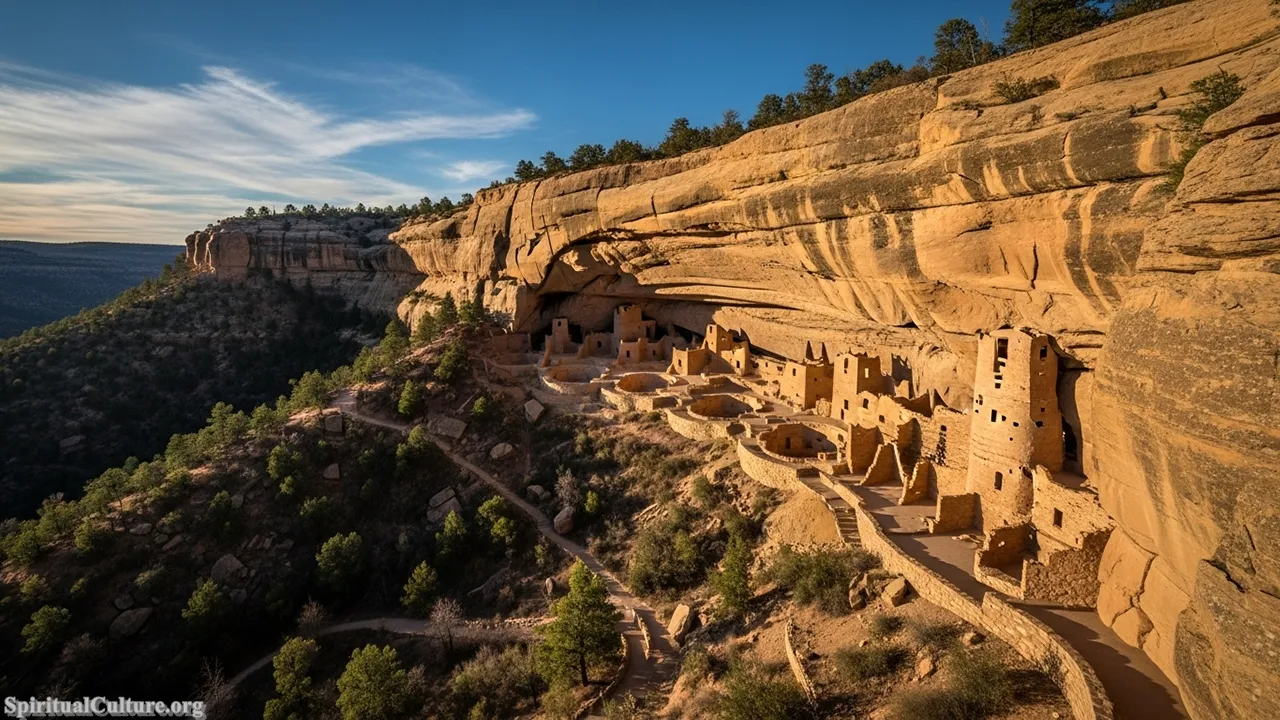
The reason for its high cultural ranking is its spiritual narrative of adaptability and continuity. The cliff dwellings and kivas, especially, embody an ancient relationship with the land and a deep spiritual life focused on community and astronomical alignment. They stand as a powerful counter-narrative to Eurocentric historical accounts, demonstrating that profound humanistic achievement and complex spiritual practice thrived on the continent centuries before European arrival.
Mesa Verde is an invaluable cultural treasure, underscoring the preservation imperative for indigenous heritage. It is a site of deep pilgrimage for many modern Pueblo tribes, linking them physically and spiritually to their ancestors. By preserving these dwellings, the U.S. acknowledges the depth of pre-Columbian civilization and honors the enduring spiritual connection between native peoples and their ancestral homelands.
Cultural/Spiritual Highlights:
- UNESCO World Heritage Site, recognized for its cultural and historical value.
- Features iconic, well-preserved cliff dwellings, including the massive Cliff Palace.
- The kivas (underground ceremonial chambers) reflect the sophisticated spiritual life of the Ancestral Puebloans.
#6. Pearl Harbor National Memorial
The Pearl Harbor National Memorial in Honolulu, Hawaii, stands as a solemn and enduring monument to the devastating surprise attack by Japan on December 7, 1941, which propelled the United States into World War II. The USS Arizona Memorial, which floats above the sunken hull of the battleship, is the site’s spiritual focal point, honoring the nearly 2,400 Americans who lost their lives on that day. As of 2025, it remains a powerful symbol of national resilience and collective sacrifice.
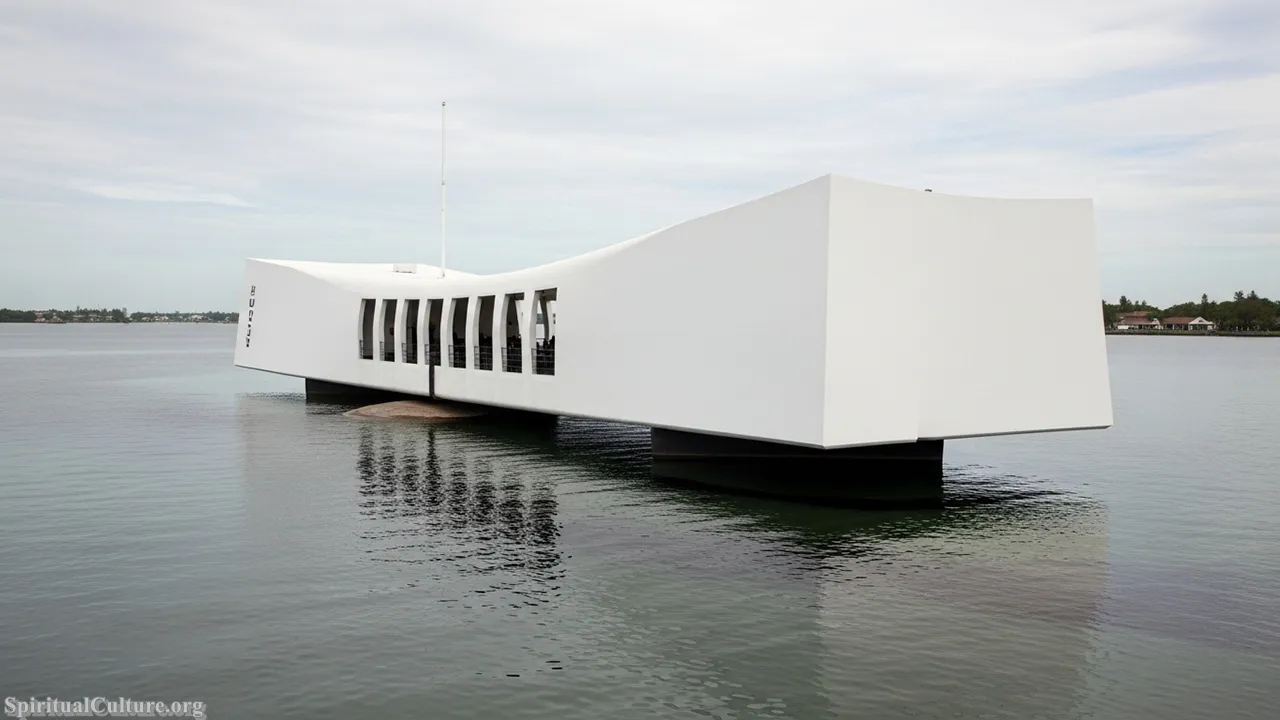
The spiritual impact of Pearl Harbor is derived from its role as a site of collective trauma and sacred memory. It is a place that transcends political ideology, demanding a somber reflection on the sudden, brutal vulnerability of the nation. The visible presence of the sunken ship and the names of the dead engraved on the memorial create a powerful, palpable sense of reverence. It is a monument to the beginning of a shared, global struggle for freedom and a visceral reminder of the cost of conflict.
The lesson offered by Pearl Harbor is the profound moral duty to remember the sacrifices that underpin peace and security. Its preservation is not merely historical but an essential component of the American civic faith, fostering a humanistic respect for those who died and a commitment to vigilance. It urges visitors to move past grievance toward a lasting reflection on the cycles of global conflict and reconciliation.
Cultural/Spiritual Highlights:
- Solemn memorial to the pivotal attack that brought the U.S. into World War II.
- The USS Arizona Memorial is the final resting place for over 1,000 service members.
- Symbol of national unity, collective sacrifice, and the beginning of a global moral commitment.
#5. Lincoln Memorial and Reflecting Pool
The Lincoln Memorial, dedicated in 1922 and featuring Daniel Chester French’s colossal statue of the 16th President, is one of the most symbolically significant structures in the nation’s capital. Situated on the National Mall, its importance is dual: honoring Abraham Lincoln’s successful effort to preserve the Union and end slavery, and serving as the definitive stage for the Civil Rights Movement. As of the Current Time of Writing, it is an enduring beacon of the American pursuit of equality.

The spiritual significance of the memorial is tied directly to its role as the backdrop for Dr. Martin Luther King, Jr.’s “I Have a Dream” speech in 1963. The site transformed from a monument to a president into a temple of civic religion, where the promise of the Declaration of Independence was forcefully reclaimed for all citizens. It connects Lincoln’s moral vision to the ongoing struggle for civil rights, making it a sacred space for American moral and political pilgrimage.
The preservation of the Lincoln Memorial and its setting is crucial because it physically embodies the most important moral and political journey in U.S. history. It stands as a profound moral lesson that the nation’s founding documents required a subsequent, painful struggle to fully realize their stated ideals. It continually inspires the civic and spiritual energy necessary to push for justice.
Cultural/Spiritual Highlights:
- Honors Abraham Lincoln, the president who preserved the Union and abolished slavery.
- The site where Dr. Martin Luther King, Jr. delivered his “I Have a Dream” speech in 1963.
- A quintessential symbol of the American ideals of unity, freedom, and racial equality.
#4. Taos Pueblo
Taos Pueblo in New Mexico is a UNESCO World Heritage Site and one of the most historically and spiritually important landmarks on the continent. Continuously inhabited for over 1,000 years, it consists of stunning, multi-storied adobe complexes built along the Rio Pueblo. It is a living community of the Tiwa people, representing an unbroken chain of indigenous culture, tradition, and spiritual practice that pre-dates the formation of the United States by centuries.

The spiritual value of Taos Pueblo is rooted in its profound connection to the earth and the ancestors, embodying a spiritual endurance that resisted centuries of colonial pressure. The architecture and daily life reflect a deep-seated reverence for nature and traditional ways, offering an invaluable perspective on humanistic resilience. It ranks highly because it is not a museum of the past, but a living testament to an ancient, thriving culture actively shaping the present.
The imperative to preserve Taos Pueblo is paramount, representing a commitment to protecting the cultural sovereignty of Native American peoples and the diversity of American heritage. It offers a vital moral lesson that true civilization is measured by cultural continuity and a harmonious relationship with the environment, rather than purely political or military achievement. It is a sacred place that calls for quiet respect and acknowledgement of the land’s original stewards.
Cultural/Spiritual Highlights:
- Continuously inhabited for over 1,000 years, pre-dating European contact.
- UNESCO World Heritage Site, recognized for its traditional architecture and living culture.
- A primary site of Native American spiritual and cultural continuity in the U.S.
#3. Statue of Liberty
The Statue of Liberty, officially “Liberty Enlightening the World,” stands in New York Harbor as a universal and globally recognized symbol of freedom and democracy. A gift from the people of France to the people of the United States in 1886, this colossal copper statue was designated a UNESCO World Heritage Site for its powerful symbolism. As of 2025, she remains the iconic first sight of hope for millions of immigrants and a spiritual beacon for democracy worldwide.
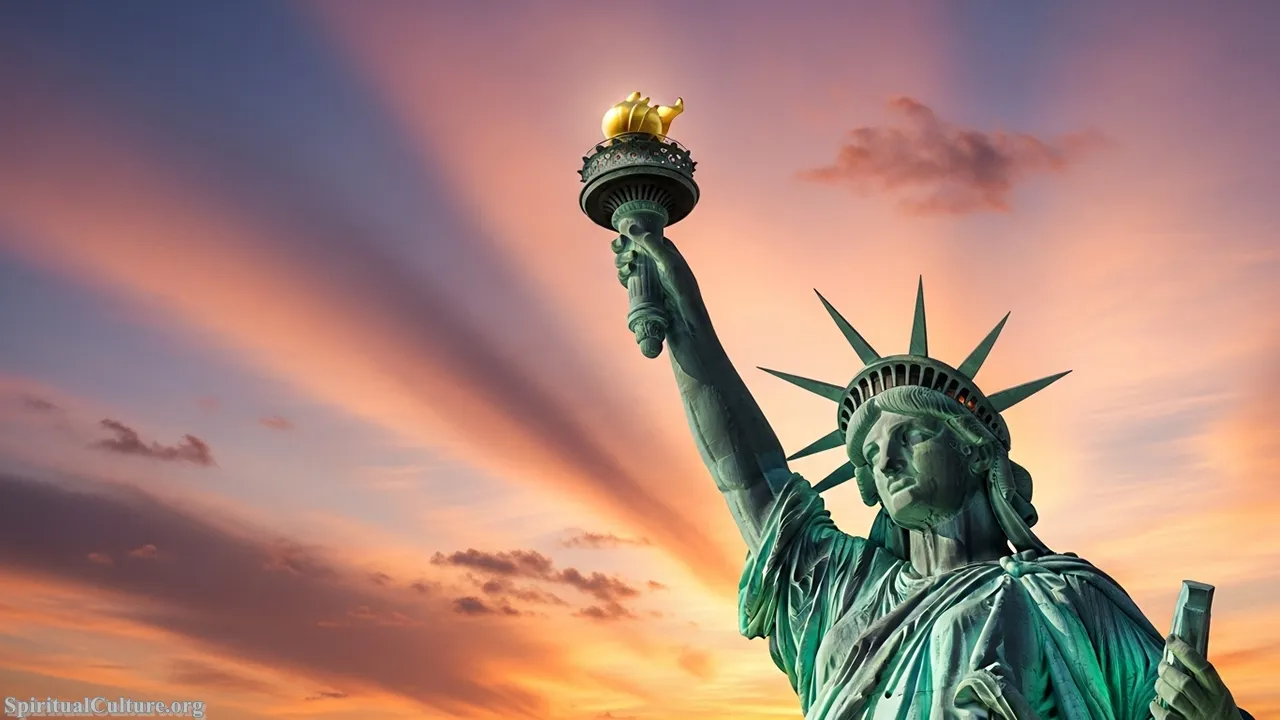
Its unparalleled spiritual impact stems from its position as the embodiment of the American ideal of welcome, opportunity, and liberty. The torch is a spiritual light of the Enlightenment ideals—reason, freedom, and the rejection of oppression—while the broken shackle at her foot represents freedom from tyranny. For millions, the sight of Lady Liberty was a transformative, quasi-religious experience, marking the end of a long journey and the beginning of a life of hope, cementing its status as a site of profound personal and collective spiritual significance.
The monument’s long-term preservation is a continuous reminder of the American commitment to its founding ideals and the welcoming spirit often romanticized in the national narrative. The Statue of Liberty offers a powerful moral lesson that liberty is a global, not merely national, concept, and that the nation’s strength lies in its ability to embrace and integrate the “huddled masses yearning to breathe free.”
Cultural/Spiritual Highlights:
- UNESCO World Heritage Site and a global icon of freedom and democracy.
- Features a broken shackle, symbolizing freedom from oppression and tyranny.
- The spiritual “first sight” for millions of immigrants arriving in the United States.
#2. Martin Luther King, Jr. National Historical Park
The Martin Luther King, Jr. National Historical Park in Atlanta, Georgia, encompasses the birthplace, church (Ebenezer Baptist Church), and final resting place of Dr. King, the most consequential spiritual and political leader of the 20th-century Civil Rights Movement. Dedicated to the principle of non-violent social change, this park is a living memorial to the spiritual foundation of the quest for racial justice and equality in America. It is a vital center for education and moral reflection in 2025.

The park is a sacred site of spiritual and moral energy, where the philosophy of non-violence was preached and put into action. It ranks second because the movement it represents fundamentally challenged and ultimately improved the moral and legal framework of the United States. The spiritual power emanating from Dr. King’s life and work—rooted in Christian theology and Gandhian principles—continues to influence global movements for human rights, making his birthplace and church hallowed ground for all seekers of justice.
The continued preservation of the King Center and the surrounding district is not just a historical task but a moral imperative to keep the flame of justice alive. It offers a universal humanistic lesson that true power lies in moral consistency, non-violent resistance, and the relentless pursuit of the “beloved community.” This park ensures that the spiritual depth and human cost of the Civil Rights struggle are never forgotten.
Cultural/Spiritual Highlights:
- Birthplace and final resting place of Dr. Martin Luther King, Jr., the leader of the Civil Rights Movement.
- Ebenezer Baptist Church, the pulpit from which Dr. King preached his philosophy of non-violence.
- The central, spiritual wellspring of the national movement for racial equality and justice.
#1. Independence Hall and Liberty Bell
Independence Hall, located in Philadelphia, Pennsylvania, is the undeniable birthplace of the United States and, as such, holds the top position in our ranking of cultural and spiritual importance. It is where both the Declaration of Independence (1776) and the U.S. Constitution (1787) were debated and adopted, and is rightly designated a UNESCO World Heritage Site. Nearby, the Liberty Bell stands as the iconic symbol of American independence, representing the very idea of liberty, unity, and abolition.

The spiritual value of this complex is foundational: it is where the spiritual and political vision of the nation was first formally codified. The documents signed here represent a singular moment in history when a political structure was explicitly tied to ideals of human freedom and self-governance. It is a pilgrimage site for those who believe in democracy as a civic religion, reminding all Americans that their governing principles were conceived not in battle but in profound, often heated, deliberation over the meaning of liberty and human rights.
As the “birthplace of America,” the preservation of Independence Hall is the preservation of the nation’s spiritual and political DNA. It serves as an essential, ongoing moral lesson that the nation’s health depends on a return to and a constant re-examination of its founding principles. In 2025, it stands as an ultimate testament to the enduring power of human aspiration to create a more perfect union.
Cultural/Spiritual Highlights:
- UNESCO World Heritage Site; the birthplace of the Declaration of Independence and the U.S. Constitution.
- The Liberty Bell is a universal symbol of freedom, first rung to call citizens to the reading of the Declaration.
- The single most important site for the genesis of American democratic, civic, and political ideals.
Conclusion
The landmarks featured in this Spiritual Culture Top 10 are far more than historical footnotes; they are the living repositories of the American soul. From the ancient, continuous culture of Taos Pueblo to the foundational political spirit of Independence Hall, and the moral power of the Martin Luther King, Jr. National Historical Park, these sites chart a complex, often contradictory, yet profoundly humanistic national journey.
Visiting these landmarks is a pilgrimage that invites introspection on the cost of freedom, the depth of indigenous heritage, and the enduring spiritual commitment required to realize the nation’s stated ideals. As we reflect on the state of the union in 2025, these sites remind us that the greatest strength of America lies in its ability to confront its past, honor its sacrifices, and continually strive toward a more just and spiritually cohesive future. They are our collective heritage, deserving of reverence, study, and tireless preservation.





